





























VOL. 104 ISSUE: 23
CONTACT THE DN
Newsroom: 765-285-8245
Editor: 765-285-8249, editor@bsudailynews.com
EDITORIAL BOARD
Kate Farr, Editor-in-chief
Trinity Rea, Print Managing
Editor
Olivia Ground, Digital Managing Editor
Katherine Hill, Co-News Editor
Meghan Braddy, Co-News Editor
Zach Carter, Sports Editor
Logan Connor, Associate Sports
Editor
Ella Howell, Lifestyles Editor, Copy Editor
Jayden Vaughn, Associate Opinion Editor
Layla Durocher, Social Media
Editor
Andrew Berger,Photo Editor
Isabella Kemper, Associate Photo Editor
Jessica Bergfors, Visual Editor
Brenden Rowan, Visual Editor
Julian Bonner, Associate Visual Editor
Corey Ohlenkamp, Adviser The Ball State Daily News
(USPS-144-360), the Ball State student newspaper, is published Thursdays during the academic year except for during semester and summer breaks. The Daily News is supported in part by an allocation from the General Fund of the university and is available free to students at various campus locations.
TO ADVERTISE
• (765) 285-8256 or dailynewsads@bsu.edu
• Hours: 8 a.m.-5 p.m. Mon-Fri. • ballstatedaily.com/advertise
TO SUBSCRIBE
Call 765-285-8134 between 9 a.m. and 3 p.m. Mon. -Fri. Subscription rates: $45 for one year. POSTMASTER: Send address changes to Daily News, AJ278, Ball State University, Muncie, IN 47306
JOIN THE DAILY NEWS
Stop by room 278 in the Art and Journalism Building. All undergraduate majors accepted and no prior experience is necessary.
The Ball State Daily News is committed to providing accurate news to the community. In the event we need to correct inaccurate information, you will find that printed here.
To submit a correction, email editor@bsudailynews.com.








Feb. 17: All 80 people on board the flight from Minneapolis “miraculously survived” after the Delta Air Lines jet burst into flames and flipped upside down as it tried to land at Toronto’s Pearson International Airport, according to the Associated Press (AP). Most passengers walked away with minor injuries, the airport’s chief executive said. Authorities said the cause of the crash remains under investigation. Investigators are looking into the weather conditions, as well as the possibility of human error or an aircraft malfunction. The crash was the fourth major aviation accident in North America in recent weeks since the Jan. 29 collision between a commercial jetliner and an Army helicopter in Washington, D.C., killing 67 people, according to AP.
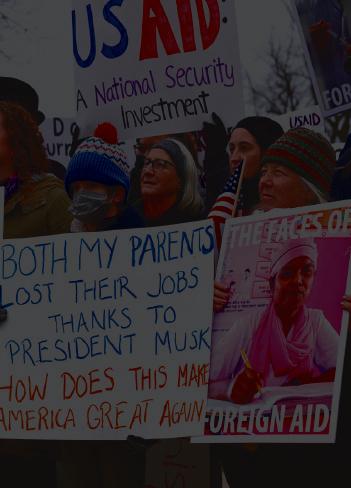
Feb. 18: President Donald Trump stopped payment nearly overnight in a Jan. 20 executive order freezing foreign assistance, accusing the U.S. Agency for International Development (USAID)’s programs of being wasteful and promoting a liberal agenda, according to the Associated Press (AP). Beyond the impact of the Trump administration’s dismantling of USAID, some 14,000 agency employees and foreign contractors, as well as hundreds of thousands of people receiving aid abroad — many farms and nonprofits — say the cutoff of U.S. money they are owed has left them struggling to pay workers and cover bills, according to AP.

Feb. 20: Ball State got things rolling at the Swig and Swine College Classic in Charleston, South Carolina, Feb. 14 and 15. The Cardinals topped Towson 7-2 behind a strong outing from senior right-hander Jacob Hartlaub. Hartlaub tossed 5.2 scoreless innings with eight strikeouts. Hartlaub did not allow a hit until the sixth inning and sat down every hitter their first time through. The pitching prowess continued Feb. 15 against Maryland. Sophomore left-hander Keegan Johnson went 6.0 innings tossing four strikeouts en route to a 5-3 victory. The Cardinals travel to California to play the Sacramento State Hornets in a four-game series Feb. 20-22.
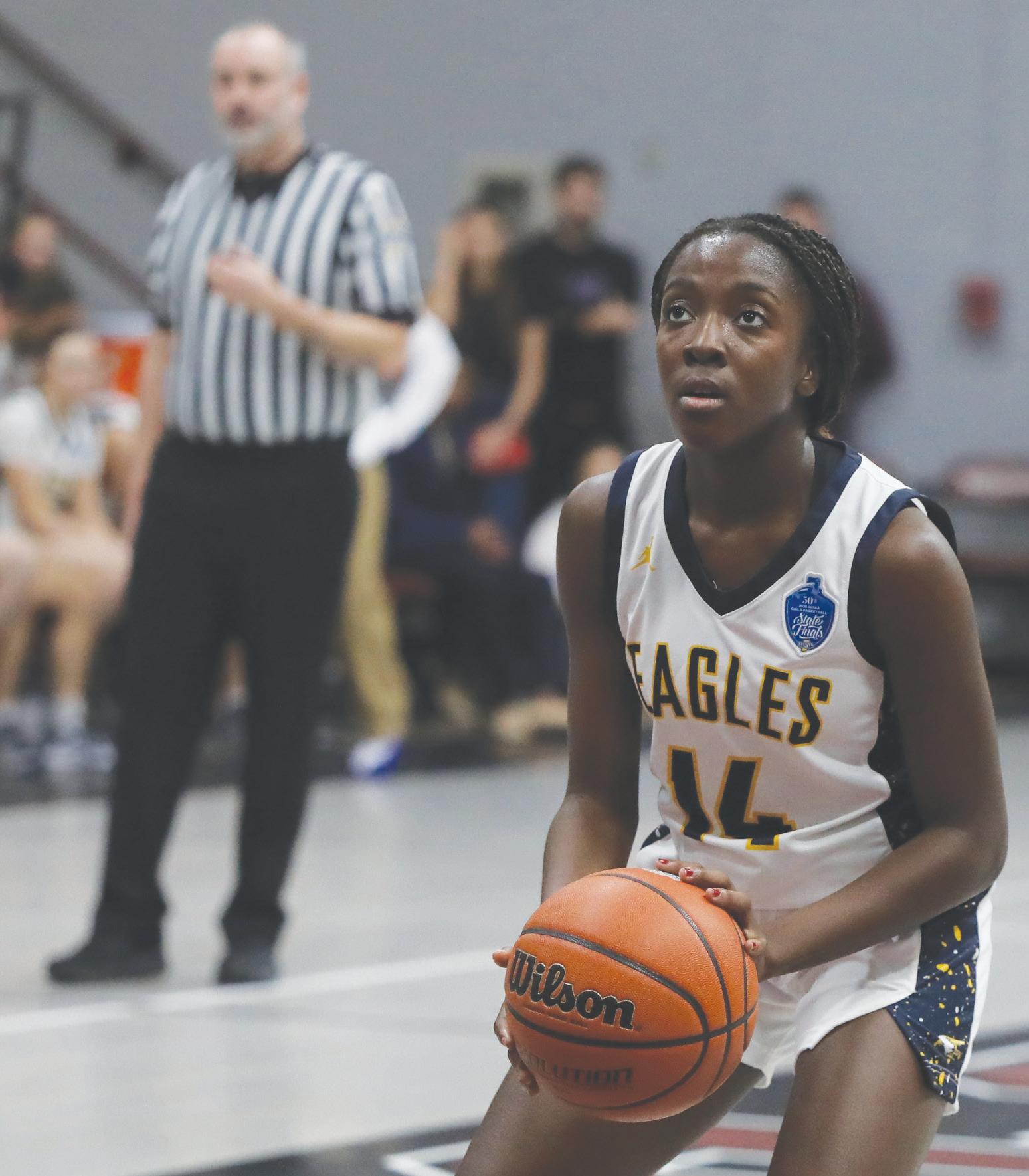

The Delta girls’ basketball team won its first regional title in the program’s history.
04
A record eight Ball State studentathletes were named to the Top 100 Students List. Cai Afalla and Grace Sumner (gymnastics), Colin Blazek (football), Emma Horton and Hannah Justice (women’s swimming), Sabrina Langerak (women’s golf), Michael Mitsynskyy (men’s swimming) and Jenelle Rogers (track and field) earned the honors.
After the performances of sophomore Ashley Szymanski and junior Zoe Middleton at the Denver Black Out Quad Meet, the two swept the Mid-American Conference (MAC) weekly awards. Szymanski won her second MAC Specialist of the Week honor, while Middleton also won her second MAC Gymnast of the Week honor of the season.
Senior Ally Becki won her third MAC Player of the Week honor, making it the 10th of her career. Becki was a major part of the Cardinals’ 12th MAC win Feb. 15 at Eastern Michigan with 20 points on 6-for8 from the field. She averaged 20 points a game during the week and five assists while shooting 7-for-7 from the free throw line.
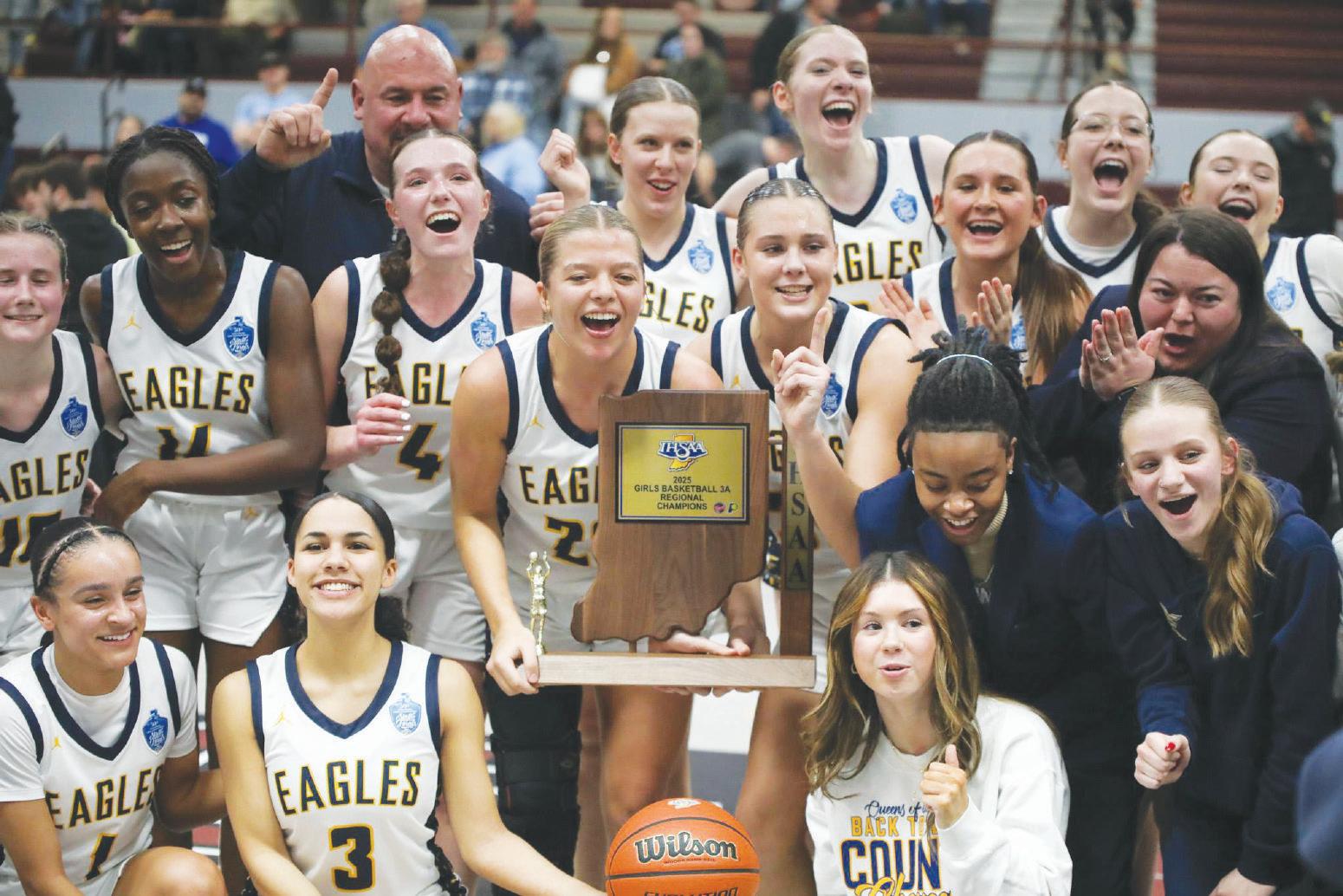
Zach Carter Sports Editor
For the Delta girls’ basketball team, their first sectional championship victory in 32 years — which they secured Feb. 8 — was a starting point.
On the evening of Feb. 15, the Eagles continued to make history, as they became the first roster in program history under second-year head coach Ty’Ronda Benning, to win a regional championship, knocking off Maconaquah in the IHSAA’s Class 3A Regional at Wes-Del Middle/ High School.
“It feels so exciting,” Delta junior Addison Barnes said. “It was a really intense game, but that’s just the perfect way to win something big like this.”
Before the game started, fans of the blue and gold piled into the gym. Only 10 minutes down the road from Delta High School, the message from Delta’s athletic program was heard loud and clear. Add in the crowd rooting for Maconaquah, Barnes said the classic Indiana high school basketball culture was being felt.
“It’s insane and so crazy, but it’s so exciting,” Barnes said. “It just feels like a culture [and gives] adrenaline to me so much.”
The Eagles went to work early. After a 3-pointer from the Braves in the first few seconds, the Eagles responded with a 14-0 run. Following that, the blue and gold used competitive defense and the paint to control the game.
At halftime, the Eagles led the Braves 23-15. Maconaquah opened the second half by draining a 3-pointer. Throughout the rest of the game, they
caught fire from deep.
“They could shoot the ball again,” Benning said.
“My girls weren’t used to [that] … I thought that at the end of the game, we adjusted well, and we took away the gap at the right times.”
While the Braves pulled within two points multiple times, they couldn’t get over the hump. Delta’s defense, with steals and buckets from Barnes and junior Elisabeth Bamidele, made it to where Maconaquah never took the lead.
After the buzzer echoed through the gym, Benning and other Eagles had to wipe away tears. Another one of their goals was crossed off the list.
“When you work so hard for something and when you work so much, it’s great to see it all pay off,” Benning said.
While she celebrated her team, Benning had extra motivation. Over her heart, she wore a pin and has done so in multiple games this season. It’s a picture of her grandmother, who passed away last month.
“I’ve worn this in important games, and I feel like my grandmother lives with me,” Benning said.
With the packed crowd, the massive student section and the noticeable support from the Delta community, this Delta team believes they have changed things around the program. For Barr, it’s just one big family.
“It means a lot knowing we pulled this thing together and changed the program by working together,” Barr said.
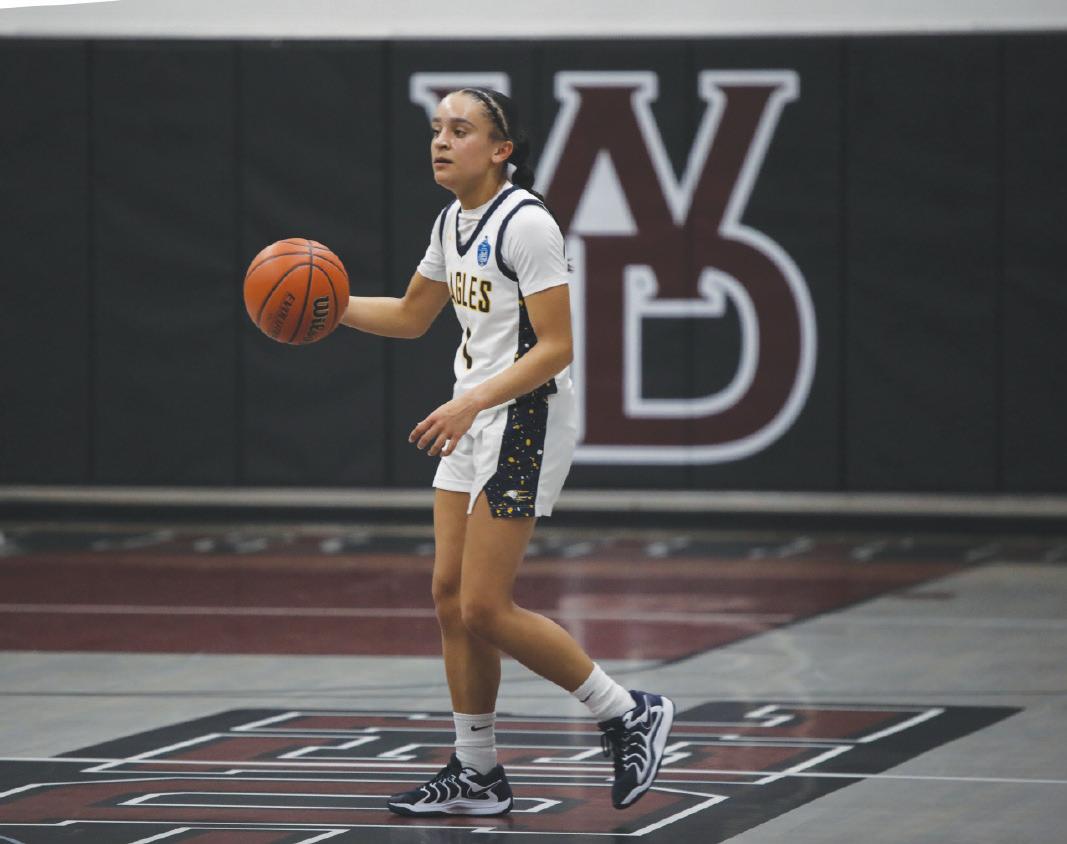

The Eagles will advance to semi-state, which will be played Feb. 22. The blue and gold will take on Norwell at Huntington North High School at 10 a.m.
Contact Zach Carter via email at zachary. carter@bsu.edu or via X @ZachCarter85.
In recent years, the Ball State Daily News has produced several annual special editions as a way to recognize and celebrate the local communities that have historically been underrepresented. Every February, we print our Black History Month issue to shed light on part of the community that tends to go overlooked. While we are an all-white editorial board — and we try to cover the stories of all aspects and components of the community throughout our print cycle — the intention of this paper is to delve into the Black history of our campus and the greater community. We feel a free press is not merely a means of reporting events. It is also a safeguard against erasure, a platform for marginalized voices and a force for accountability. This issue is not merely a one-time acknowledgment of Black stories; it is a testament to the power of recognizing history and fostering dialogue, especially during a time in which diversity, equity and inclusion (DEI) efforts are being threatened. At the end of January, the U.S. Department of Defense (DoD) published a news release titled “Identity Months Dead at DoD” outlining how official government resources, including working hours, will no longer be designated to “mark cultural awareness months.” Black History Month was among the events that faced prohibition. Meanwhile, at the state level, legislation aimed at dismantling DEI initiatives in our schools and government institutions is advancing in our Senate. We have witnessed our university’s administration preemptively comply with bills that have yet to become law. When lawmakers seek to curtail DEI efforts in education, government and public institutions, the press must rise to the challenge of filling the void, guaranteeing that underrepresented communities are neither silenced nor forgotten. The Ball State Daily News stands firm in its commitment to free speech, free inquiry and a free press. We refuse to surrender to legislative attacks, as it will always be our responsibility as a publication to report on the diverse issues that shape our community. We refuse to allow the public narrative to be shaped by omission. We will continue to tell the stories that need to be told and stand by the belief that every voice matters, despite legislative pressure. Diversity in our storytelling is not rooted in a political agenda; it is an ethical, unbiased imperative required of journalists. We will continue to celebrate Black History Month and recognize the diverse communities of Muncie and Ball State University now and for years to come.
Sincerely,
The Ball State Daily News Editorial Board

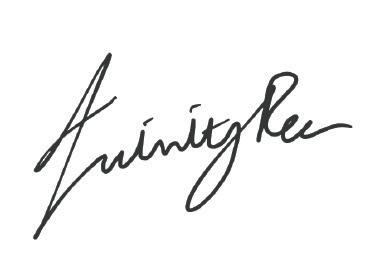


Meghan Braddy Co-News Editor
“Igniting potential, inspiring success.”
This is the mission of Man 2 Men, an initiative born at Ball State University in 2021, according to the group’s Ball State University website.
Huy Huynh, the group’s program coordinator, described Man 2 Men as an initiative “boosting the retention and graduation rates of men of color on campus, specifically for Black and Latino men who have the lowest rates of graduation at Ball State.”
The origins of Man 2 Men are rooted in the vision of former Ball State architecture student
Jarron Tichenor, who played a role in bringing the program to life.
“Man 2 Men was something that I always wanted to have — some sort of group where we can engage in brotherhood and just like a safe space, particularly for Black men but minority men as well,” Tichenor said.
He discussed how the space was always designed to be inclusive.
“We don’t turn away anybody. Everybody has a voice,” Tichenor said.
Tichenor’s experiences as a student shaped his vision. After initially struggling academically and transferring from Indiana State University to
Ball State in 2018, Tichenor eventually became dedicated to creating a space where men of color could find support and a community in Muncie.
“I wonder how my life would be different if I had a mentor or a brother or just a group of brothers I can confide in,” he said.
Man 2 Men began as an event organized by Tichenor’s fraternity, Alpha Phi Alpha, in partnership with other historically Black fraternities on campus.
In the fall of 2021, Tichenor said they had an L.A. Pittenger Student Center event centered around discussions about school, work, and dealing with emotions and discrimination.
Fourth-year psychology major Elijah Newman introduces an activity challenge to Man 2 Men members during a meeting Feb. 17 at the Multicultural Center. The group challenge for attendees addresses the methods of approaching romantic scenarios.
“We united the campus in that way because sometimes people can be standoffish toward each other,” he said. “At the very least, we now understand that we all go through similar things.” From there, Tichenor connected with Bobby Steele, the then-director of the Multicultural Center, and Ball State Vice President of Student Affairs Ro-Anne Royer Engle, who both became key supporters of the initiative.
“They put a battery in my pack and told me to take my best shot,” Tichenor said.
In the spring of 2022, he launched what Man 2 Men is today, with events every other week focused on goal setting, conflict resolution
I� ��s �m�zing �o see people ��n�ing �o ��l� �bo�� �heir feelings. I� ��s � sp�ce �here � lo� of people fel� comfor��ble eno�gh �o be v�lner�ble.”
- CALEB ROBERTS,
Man 2 Men public relations team member
and emotional intelligence. These gatherings became a safe space for self-expression among men in the group.
“It was like group therapy, empowering us to sit in our full range of humanity,” Tichenor said.
The program gained momentum in 2023 when it received grant funding from the American Electric Power Company, a company Huynh said has a division of racial and social justice where they donate to other universities or nonprofits.
“This financial boost allowed Man 2 Men to establish structured programming and implement data-driven approaches,” Huynh said. “Before that, we had just one student designated to running whatever Man 2 Men had planned. But since we got the donation, I wanted to take a more analytical and data-driven approach.”
A fall 2024 report compiled by Huynh provides evidence of Man 2 Men’s effectiveness. According to the report, Man 2 Men held 12 events throughout the semester. Each event alternated between social and developmental activities designed to help with community engagement and personal growth among students in the organization.
The program saw an average attendance of 29 students per event, with a total participation of 357 students, compared to 153 students across five events the previous fall.
“One of the statistics that I found interesting this past year was that everyone who attended all of our events last year averaged a 3.2 GPA; all the students who attended only one or [fewer] events averaged a 1.4, and all those students who are leaving are averaging a 0.8,” Huynh said.
However, Tichenor’s vision for Man 2 Men goes beyond academic success. He also wants to create a space for leadership development.
“Empowering guys to take on some of these positions prepares you for what’s next after campus,” he said. “Whether that’s the workforce or familial life, people love leaders.”
Vice President Angel Esquivel-Vazquez spoke about the program’s impact when he became a leader.
“It made me kind of feel like I can make a difference for people with my demographic,” Esquivel-Vazquez said.
Similarly, member Jalen Adkins-Dunscomb
emphasized the impact the brotherhood of Man 2 Men had on him.
“I kind of got drawn in by the activities they were doing, as well as the impact that it had with me introducing myself to other men around campus,” he said.
Caleb Roberts, a member of the group’s public relations team, also shared his perspective on the program’s mission of creating an inclusive space for men on campus.
“Our mission is to equip and to create a space for students of color, specifically men of color. Our main goal is retention, so we want students of color to feel welcome enough to stay on campus,” he said.
Roberts further highlighted the program’s inclusive nature, stating that Man 2 Men is open to men of varying racial backgrounds.
“We’ve had multiple races; all types of people. We are open to everybody,” Roberts said.
However, Roberts finds the most rewarding of Man 2 Men to be the environment of personal growth that forms amongst members.
“Our events often end up becoming a very personal, very vulnerable space for men of color to open up on campus,” he said.
One event that stood out to him was “Main Character Energy,” which focused on self-love and self-care.
“It was amazing to see people wanting to talk about their feelings. It was a space where a lot of people felt comfortable enough to be vulnerable,” Roberts said.
Man 2 Men now operates weekly, having events every Monday in the Multicultural Center, alternating between social gatherings and professional development workshops from 7 p.m. to 9 p.m.
Man 2 Men also provides financial assistance for students who consistently attend the events.
“Every semester, we’re able to give a handful of students $250 each as a book grant. We’ve given over $20,000 in financial assistance to students,”
Huynh said.
Despite its success, Man 2 Men’s future relies on sustainability.
“We are a grant-funded program, so there’s no assurance that we’ll have the money forever,” Huynh said.
To keep receiving this funding, Hunyah hopes to continue tracking retention and graduation rates while giving students at Ball State more careeroriented opportunities for them to have long-term success after graduation.
Reflecting on the evolution of Man 2 Men, Tichenor discussed how rewarding the organization’s growth has been.
“I was invited back to speak after I graduated. It was beyond my words — pretty full circle,” he said. “It’s amazing to see that it’s not only continuing, but it’s growing, and people are getting value out of it.”
Man 2 Men continues to thrive from when it first started at Ball State, driven by a shared commitment to support academic success and provide a sense of community and brotherhood.
“Having faith to see your work through to the end is what Man 2 Men is all about,” Tichenor said.
Contact Meghan Braddy via email at meghan. braddy@bsu.edu or on X @meghan_braddy.
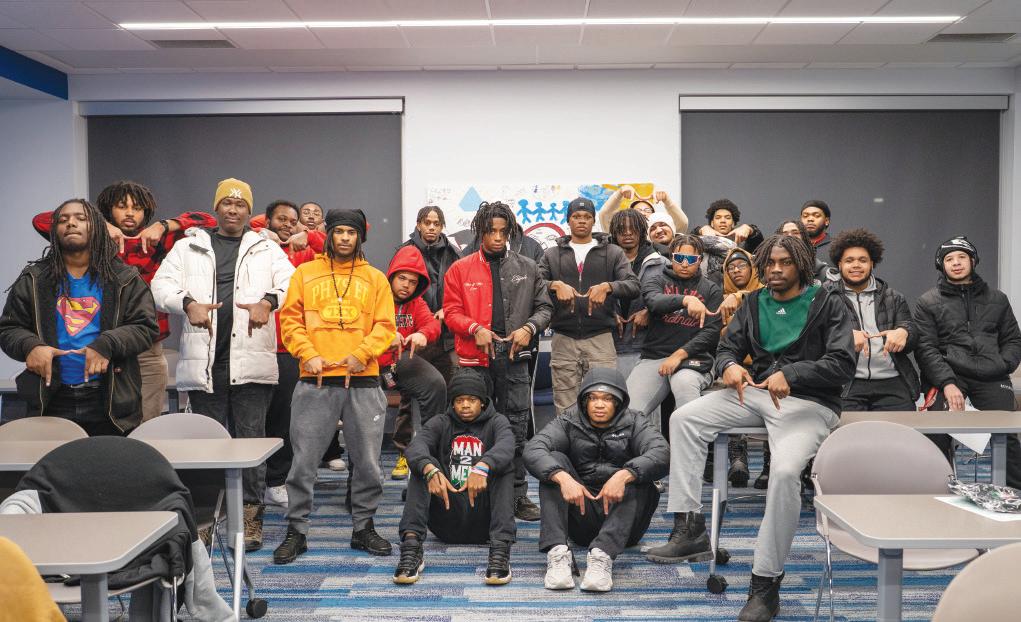


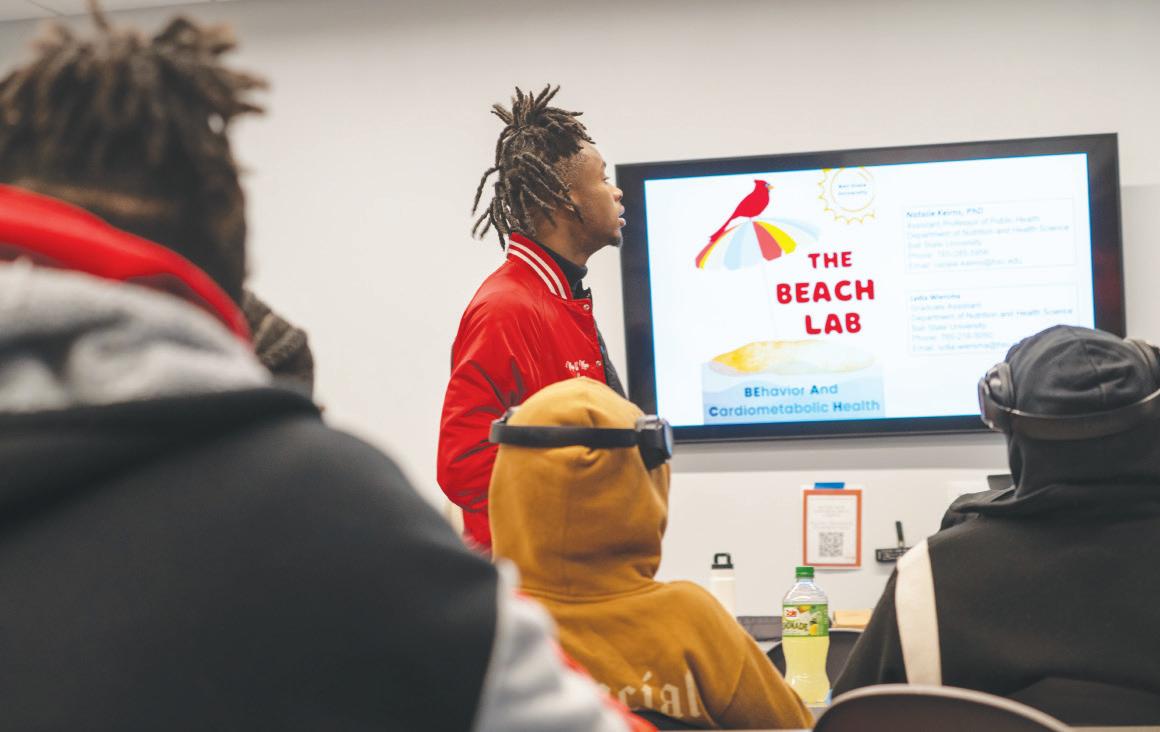


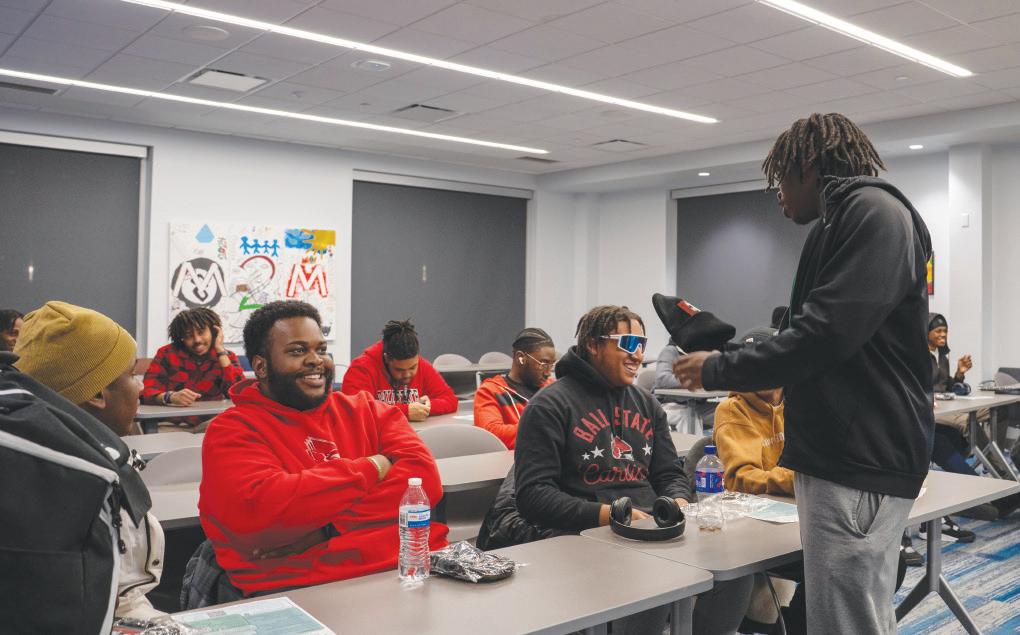

Ball State’s Multicultural Center to be renamed in honor of two pillar Black community members.
Katherine Hill Co-News Editor
Ball State alumnus Vivian V. Conley worked as a domestic laborer in the early 1960s — amid the thicket of segregation — bringing her teen daughter, Myrna Robertson.
The 40-something-year-old was cleaning houses a couple of blocks from Ball State’s campus when Robertson remembers her mother telling her, “One of these years, I’m coming to Ball State as a student.”
At the time, Robertson shrugged it off, knowing that her mother had yet to receive her GED.
However, at age 66, Conley graduated from the university with a bachelor’s degree in political science in 1988, followed by a master’s degree in gerontology.
Now, the university’s multicultural center will be renamed in honor of her and Hurley C. Goodall Jr., a testament that “people have dreams and ambitions, and sometimes, they do come true,” Robertson reflected.
The honor was officially approved at Ball State’s December 2024 Board of Trustees committee meeting, with the families of the late Muncie natives in attendance to bear witness to the honor.
The center — dedicated to “help[ing] students of color on campus and educat[ing] the campus community about diversity,” according to its website — has been Ball State’s “cornerstone of inclusiveness” since its 1968 construction, according to a press release from the university.
During the motion hearing, board member and Ball State alumni Henry Hall said the multicultural center was “shuttled away” when it was first built.
“It was a place where a lot of people who looked like me found refuge,” Hall said.
Hall credited Ball State President Geoffrey Mearns’ efforts to make the university cornerstone more central to campus and accessible to students, including the 2019 reconstruction of the building.
Vice President of Student Affairs Ro-Anne Royer Engle began working at Ball State in 2019 when the multicultural center was under reconstruction and relocation to become a centralized campus destination.
“President Mearns asked me to explore the naming of the multicultural center because of requests from alumni and community members,” Engle said.
When exploring possible namesake honorees, Engle said the significance of Conley and Goodall’s
contributions to the Muncie community and their dedication to Ball State reflected the purpose of the multicultural center — a sentiment echoed by many alumni and community members pleased with her selection.
“We couldn’t have two more worthy names on the multicultural center,” Hall said.
Conley served the Muncie community as a staunch advocate of education and social justice until her death in 1993. Robertson said Conley was a single mother who raised six children and extended her motherly love to Muncie’s community members, earning the affectionate nickname “Muncie’s Mother Teresa” by those who crossed paths with her.
Robertson said her mother had so much love to give, which dispelled any hint of jealousy among her children when it came to sharing their mother’s generosity with the world.
“We knew that was Mom’s faith in God sending her to be a servant,” Robertson said.
Having reaped the benefit of higher education later in life and feeling compelled to make the same opportunities available to everyone, Conley was an active member of the community and championed the importance of education.
“We all knew education was important for what we wanted and needed in life,” Robertson said, “She instilled that into us, [and] then it was passed down to the grandchildren and great-grandchildren.”
Despite having the value of education ingrained in her from a young age, Robertson said she did not pursue higher education, a decision that did not disappoint her mother.
Mom always listened to what God envisioned [for] her, put in her heart. She never criticized anything.”
- MYRNA ROBERTSON, Vivian Conley’s daughter



“Mom always listened to what God envisioned [for] her, put in her heart. She never criticized anything. She always said, ‘Well, OK, let’s give it a try, and let’s see what happens.’ She always let us go our direction,” Robertson said.
Realizing her daughter did not want to go to college prompted another avenue of Conley’s advocacy.
“It came into her mind that we still need to educate kids on how to make a living because we have to make a place for them in our society,” Robertson said.
Understanding the value of earning a living firsthand, Robertson applied for jobs straight out of high school but remembered growing up in Muncie amid “high racial tensions.” Those tensions prevented her from employment time and time again.
Conley went to bat for her daughter and helped her “go her direction” toward a job she held for 18 years.
‘I owe everything to him’
Goodall led a life of service as a U.S. Army veteran, Muncie’s second African-American firefighter in 1958 and served as an Indiana state representative (D-District 38) from 1978-1992.
Engle met with Goodall on more than one occasion during his 93 years of life and fondly remembers his “encouraging, courageous and community-oriented” personality.
The multicultural center offers an award named in honor of him that recognizes a fulltime faculty or professional staff member who has “gone beyond the call of duty to assist the multicultural center in developing students over the past year,” according to the center’s achievement awards webpage.
Every spring. Engle said Goodall would return to the university to honor the recipient of his award.
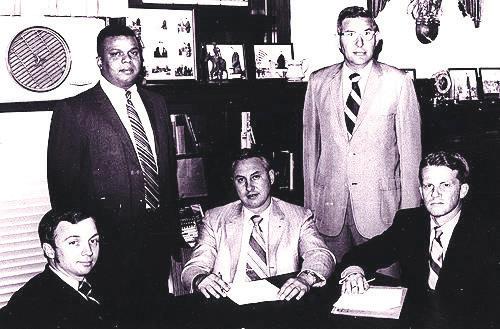
I can’t think of a dad who would have been better for me personally. He was very supportive of any and everything I wanted to do. His dedication to the community and helping others shaped me greatly. I owe everything to him.”
- FRED GOODALL, Hurley Goodall Jr.’s
son
“He was extremely generous with his time and had a commitment to the university, our students and education. Making sure he uplifted the community and gave back in important ways were things I witnessed and spoke with him about,” Engle said.
Though Hurley was generous with his time, he treated each commitment with dedication — the most important being family, such as his youngest son Fred Goodall.
“I can’t think of a dad who would have been better for me personally,” Fred said. “He was very supportive of any and everything I wanted to do. His dedication to the community and helping others shaped me greatly. I owe everything to him.”
At the forefront of Hurley’s parenting was the principle of respect, Fred said “He always taught me and my brother that to command respect, you needed to give respect to others [and] be open to listening and working with others in order to accomplish your goals,” Fred said, adding that his dad practiced what he preached.
By putting that principle into action through his legislative work and advocacy, Fred said his dad showed his sons firsthand the great things that can come from collaboration for the benefit of an entire community when people work together, often accomplishing projects with assistance from his opponents.
“I won’t even pretend to have matched his work ethic, but I try as much as I can,” Fred said.
The campus’ multicultural center has long been a place that allows students to ask questions and educate themselves on unfamiliar cultures, inviting curiosity and the exchange of ideas between people from different backgrounds. Fred said observant curiosity was a fundamental element of his father’s character.
“He was very active in the community, and he thought it was important that we pay attention to what was going on [around us], and if we felt there was something that we could do to help make a situation better — be it lead the charge ourselves, or join others, take action,” Fred said.
Fred expressed his appreciation to the university and felt his dad would have similar thanks to give in recognition of the co-namesake honor.
“One thing that would have been gratifying to him is [to know] that after all the hard work and everything, there were people [who cared], and Ball State was able to look at his life and overall career and realize that he was worthy of having his name on the building,” Fred said.
‘It’s
Engle said she did not have the pleasure of knowing Conley personally the way she did Hurley, but Conley’s family was just as warm, enthusiastic and thankful for the honor as the Goodall family.
Religion was an important aspect of Conley’s life and the forefront of her generosity. She attended church regularly with her children, and Robertson fondly recalled the two of them analyzing sermons from Rev. Williams routinely after Sunday church. One of their favorites was titled, “How So Go Your Journey?”
Robertson said the sermon focused on the idea that “the journey you’re on is not necessarily for you, it’s for other people.”
When she received word that her mother’s name had been chosen alongside Hurley’s for Ball State’s Multicultural Center, she said the sermon rang in her heart, as tears welled in her eyes.
“I thought, ‘How so go Mama’s journey?’ When Ms. Engle called me, I thought, her journey isn’t over. This was still in her journey,” Robertson said.
Contact Katherine Hill via email at katherine. hill@bsu.edu.
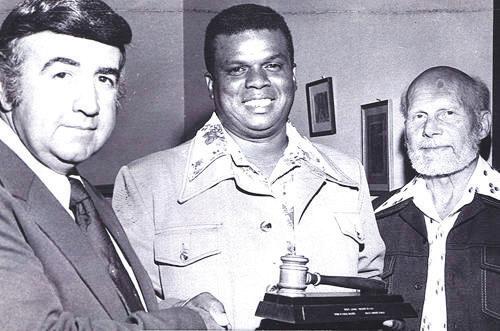
(Right) Hurley C. Goodall Jr.’s is pictured in a portrait. Goodall is one of Muncie’s first Black firefighters. Muncie was Goodall’s home for nearly 94 years, from his birth in 1927 until his death in 2021. BSU
ARCHIVES, PHOTO PROVIDED. (Below) Vivian V. Conley, pictured here, was a civil rights activist in Muncie, Ind., at the forefront of many community issues relating to education, civil and elderly rights. A ceremony recognizing honorees for the Coalition of Women’s Organizations 2022 Women’s Equality Day celebration was scheduled August 25, 2022, with each honoree receiving a Vivian V. Conley Certificate.
BSU ARCHIVES, PHOTO PROVIDED
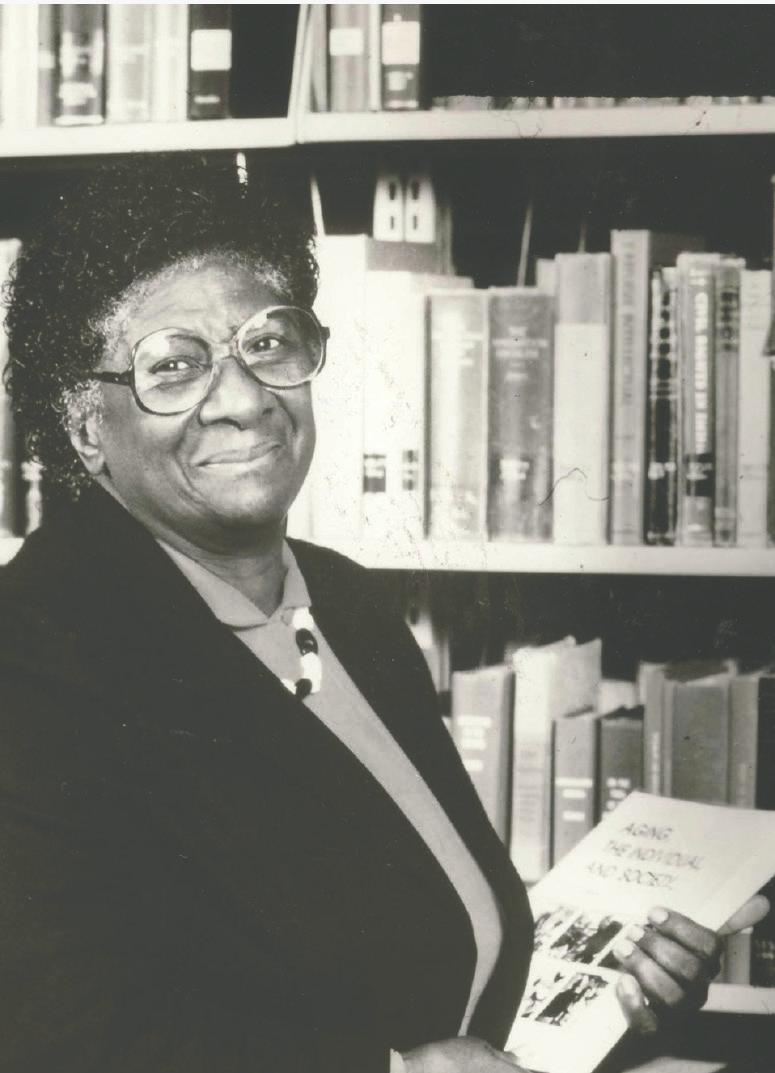
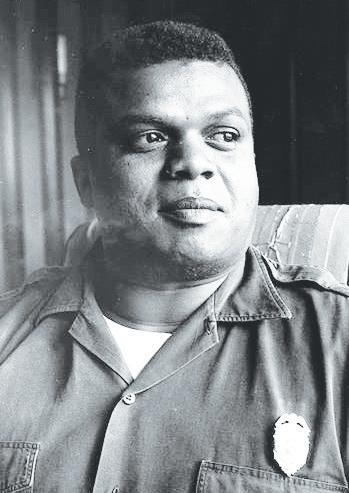
Muncie’s statue of Hurley C. Goodall Jr. serves as a reminder of his impact.
Ella Howell
Lifestyles and Copy Editor
A civil rights leader, a historian, a politician, a firefighter and even an author are just a few ways to describe the impact one man had on the Muncie community.
Hurley C. Goodall Jr. was born and raised as a member of the Muncie community and graduated from Muncie Central in 1945, according to Minnetrista. He was one of the first Black firefighters in Muncie, and he dedicated a lot of his time to documenting the history of Black people in the area.
In 2017, the Delaware County Historical Society and Community Enhancement Projects began fundraising for a statue to honor Goodall’s legacy.
Beyond his trailblazing in Muncie, he also served in the Indiana House of Representatives as a member of the Democratic Party from 1978 to 1992. He was also a founding member and served as the first chair of the Indiana Black Legislative Caucus, according to Ball State University.
Chris Flook works in Ball State’s Department of Media and teaches students to use modern storytelling to help people better engage with historical events.
He grew up in Muncie and said Goodall was “spoken as a hero” in his family. He got the opportunity to learn even more about him through the project. With his position as the president of the historical society at that time, he was largely responsible for the coordination of the statue.
“We wanted to really make something that was public art that honors someone that made such a huge impact within the community,” Flook said.
“Hurley was a historian in his own right. He was a firefighter, he was the first African American on the school board, he was a representative in the General Assembly, and so he did all these really amazing things.”
By 2019, enough money was raised to commission Indiana artist William “Bill” Wolfe to design and create the iron and hydrostone sculpture of Goodall in Firemen’s Park.
Wolfe explained each little detail within the artwork was meticulously thought out. He said, through his research, he found that Goodall was a “sharp dresser,” so it felt natural to put him in a suit.
He also said he chose to memorialize Goodall with a pose that felt like him. His statue depicts him with one foot propped up on a block with his hands resting on his knee to give him a more relaxed feel.
“When I think of him, I think of more just a person of the people. It’s the only way I can describe it,” Wolfe said. “So to me, rather than have him stoically standing there, all puffed up and a straight statue, he’s a little more [of a] relaxed Hurley and approachable.”
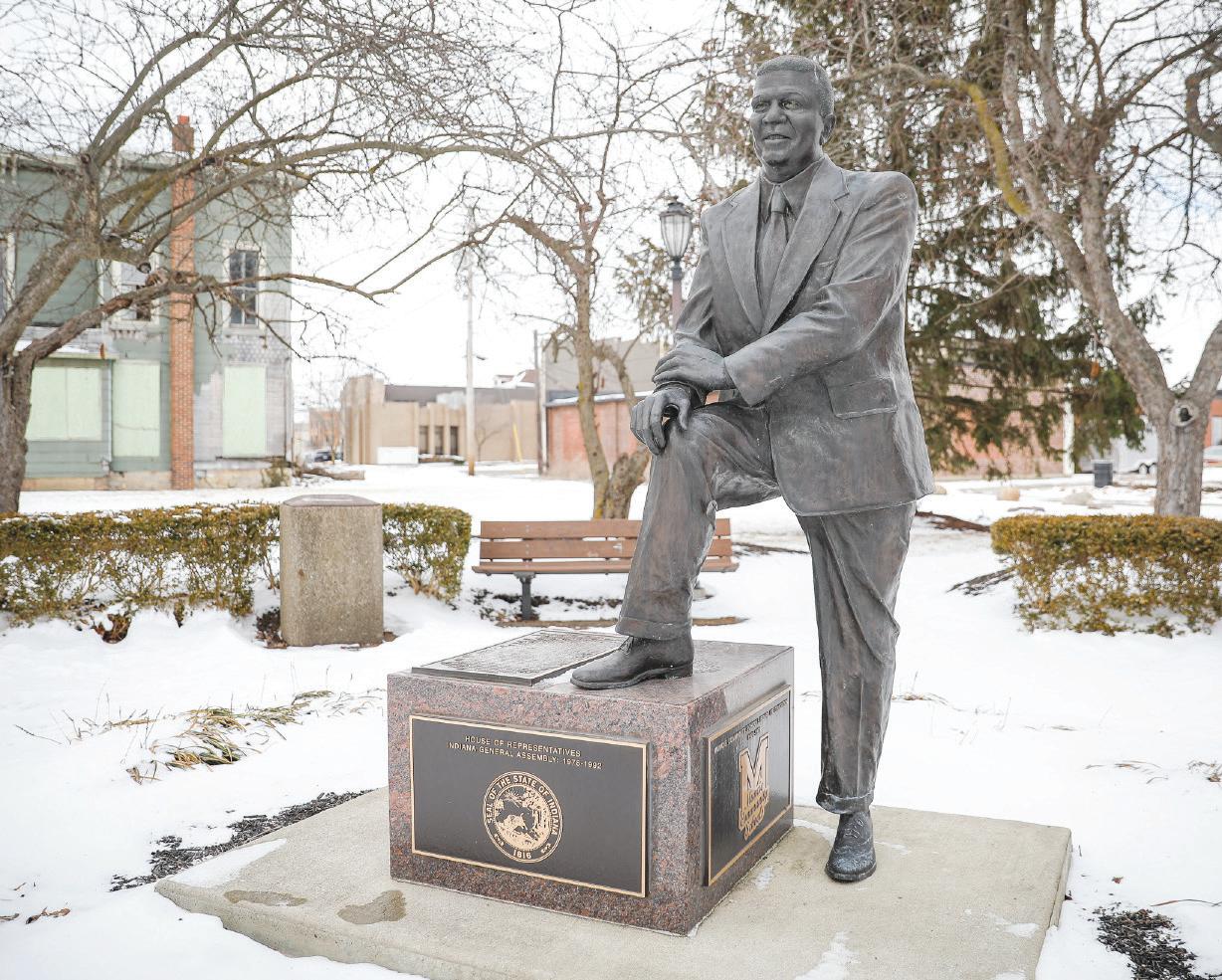
A statue of Hurley C. Goodall Jr. is photographed at Firemens Park Feb. 19 in Muncie, Ind. Goodall also served in the Indiana House of Representatives as a member of the Democratic Party from 1978 to 1992. ANDREW BERGER, DN
Beyond being a symbol of his lasting influence in Muncie, for some, the statue serves as a reminder of a deeper connection they had with Goodall.
To Robert Olden, he was known as Uncle Junior, and they spent a lot of time together throughout his life. Olden’s mother was a widow, as his father was killed in World War II. When Goodall came home from service, Olden spent a lot more time with his uncle.
He has fond memories of their visits, and they formed a close relationship. He helped guide him through many milestones, like following in his footsteps and becoming a firefighter or when he taught his nephew how to drive.
Hurley will go down in history with his accomplishments, so he won’t be forgotten now.”
- WILLIAM “BILL” WOLFE, Artist commissioned to create Goodall’s statue
“I’m very proud to have been his nephew. I’m very proud of him as a person and the example [my family] set for me,” Olden said. “He served well in this community because he wanted to serve this community.”
When the statue was unveiled at Firemen’s Park in May 2019, Olden attended the event with his uncle and other family members. He was asked to speak in front of the community and hopes people, especially younger generations, look at Hurley’s statue and think of the possibilities and know that they can be whoever they want to be.
“If you have an interest, if you have a goal, if you have a passion, think it. It’s available to you,” Olden said. “Have a drive within yourself to do those things that you have passion for.”
Wolfe said creating this statue was unique because he had the opportunity to have the person he was replicating stand in front of him.
When Goodall and Wolfe first met, Wolfe used the opportunity to trace the landscape of Goodall’s face with his fingertips and feel the mass of his head in his hands to better reflect Goodall’s appearance in his work.
“When you do that, it registers almost like measurements … from my hands and fingertips to my brain. And then it really did mean something to me when I started on the sculpture,” Wolfe said.
He said he hopes this physical reminder of Goodall’s impact leads to more people learning about who he was and why he’s important.
“I just hope they see him standing there and it draws attention and pulls them in to maybe
want to read a little bit more about whose statue that is … The guy had a really wonderful life, I think,” Wolfe said. “Hurley will go down in history with his accomplishments, so he won’t be forgotten now.”
Flook said while sculptures don’t clearly communicate history alone, they draw people in to spark a conversation and encourage them to learn more about what the artwork represents.
“What motivated me was lots of people know Hurley. Hurley was still alive when we put the statue up … I’m worried about 50 years from now, his legacy may not be as remembered as well then,” Flook said. “Having something physical on the landscape means that, hopefully, that will start or trigger discussions.”
To Olden, the statue represents the strides his uncle made with civil rights in Indiana and opportunities that have since opened up for Black people.
“We had a Black president. We [had] a Black vice president. Those broke ceilings, those broke positions that hadn’t been retained before. But lower than that, we have Black folks everywhere doing everything,” Olden said.
Goodall died May 12, 2021, just two years after the dedication and unveiling of the statue. But the sculpture of him in Firemen’s Park will help ensure his story and his legacy live on. Contact Ella Howell via email at ella.howell@ bsu.edu.
The first Black athlete was inducted in 1976, and since then, 37 athletes have been honored. Here are a few of them:
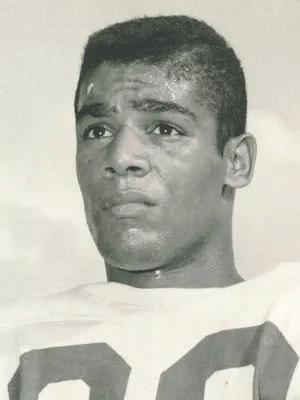
The first Black athlete to have his name carved in Ball State immortality is former football player Tim Brown. Playing for the Cardinals from 1956-58, Brown was an All-American and held six program records by the time he finished his college career. He played in the National Football League (NFL) after being drafted in the 27th round of the 1959 NFL Draft by the Green Bay Packers. He went on to play for the Philadelphia Eagles and Baltimore Colts.

Playing for Ball State from 1961-64, Butler was an All-American honorable mention. He also was named the Indiana Collegiate Conference Player of the Year after the Cardinals made the NCAA College Division Tournament following the 196364 season.
Butler owns multiple Ball State rebounding records and is in the top 20 of Ball State’s all-time scoring numbers with 1,278 career points.

Zach Carter, Logan Connor Sports Editor, Associate Sports Editor
Jackson was a three-year baseball letterman at Ball State from 1964-66. He was a two time most valuable player as the team earned All-Indiana Collegiate Conference and All-NCAA District Four recognition. When he graduated in 1967, he owned program records for hits and runs scored and had the singleseason record for triples. He spent one year in Major League Baseball after being drafted by the New York Jets in 1966.
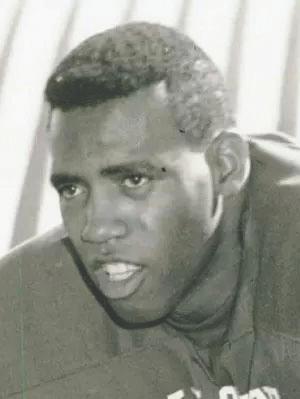
In 1965, Todd set many Ball State football rushing records while leading the Cardinals to the first game in the program’s history. Some of the records he held included 198 rushing yards in a single game, 850 yards in a season and 1,751 for his entire career. He played for the Detroit Lions 1966.
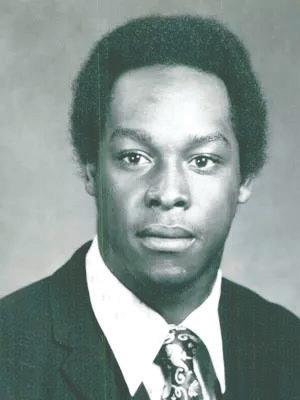
Stringer was a three-year starter for Ball State from 1974-76 and was an All-Mid-American Conference (MAC) defensive end. He was drafted in the ninth round of the 1977 NFL Draft by the Houston Oilers and retired in 1982.
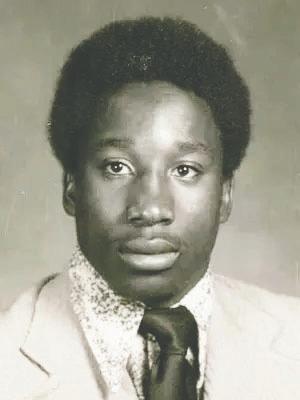
Before playing in the NFL for the New York Jets and Cincinnati Bengals, Suggs played four years of football and three years of basketball with the Cardinals. In 1972, he was the MAC’s Defensive Player of the Year and was given All-American honors. He was drafted in the second round by the Jets.
YWCA Central
Indiana stands by the commitment to eliminate racism and empower women in Muncie and Delaware County.


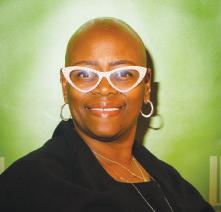
Submitted by WaTasha Barnes Griffin, community member and CEO of YWCA Central Indiana. Her views do not necessarily reflect those of the Ball State Daily News. Community members can submit letters to the editor through the email found at the bottom of the opinion.
As we celebrate Black History Month, it’s an important time to reflect on the progress made toward racial equality and the work still ahead of us. At the YWCA Central Indiana, we understand that Black History is not just a month-long observance but a daily commitment to creating a more equitable society.
Our mission to eliminate racism and empower women is more than a slogan; it’s a call to action that drives everything we do in Muncie, Delaware County and beyond. At the heart of our efforts is the understanding that racial justice and gender equality are intertwined. We are proud to support and uplift women of color who face the dual challenges of racism and gender inequality.
For too long, these women have been marginalized, their voices silenced and their potential limited.
Through our programs, we aim to create pathways for women to thrive — whether it’s by offering safe shelter, providing job training, or delivering essential services that empower all women to rebuild their lives with dignity and hope.
Our work would not be possible without the strong, collaborative partnerships we’ve built with local organizations, each contributing to a collective vision for a more inclusive and just community. We are fortunate to work closely with the NAACP Muncie Branch and Youth Council, whose tireless advocacy for civil rights serves as an essential pillar for racial justice in our region.
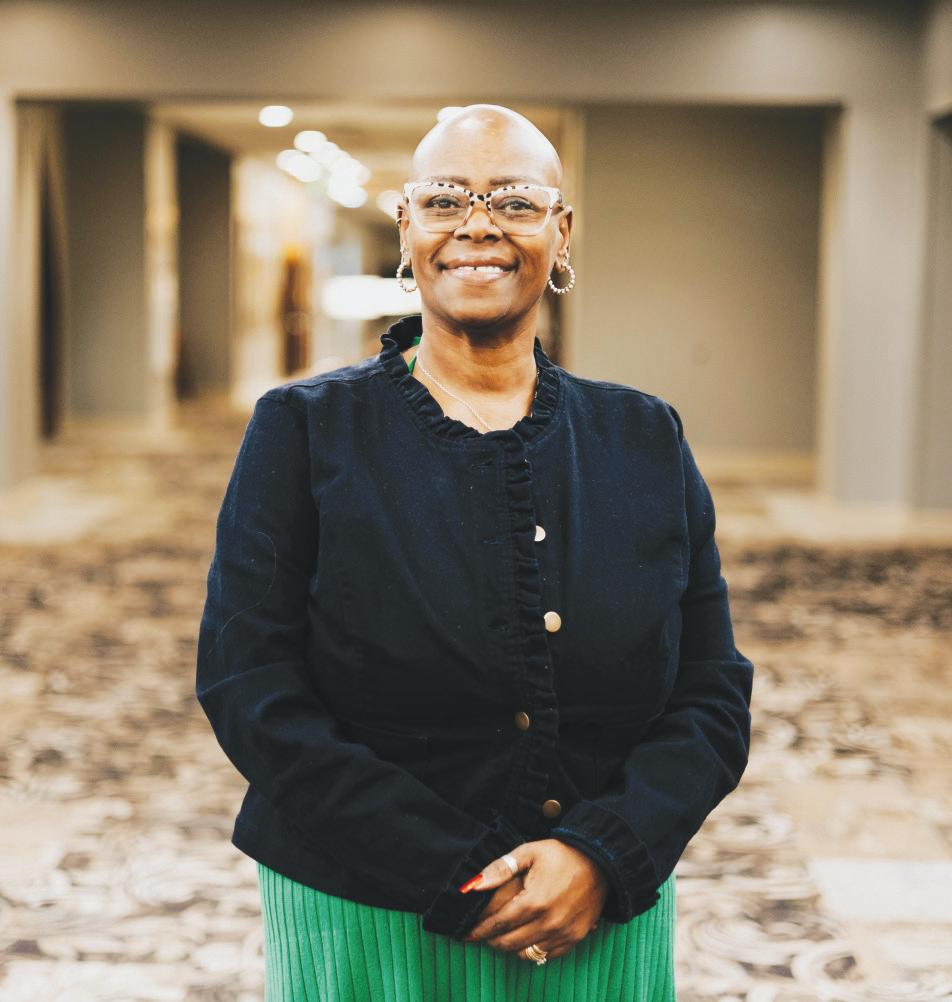
Together, we are creating lasting change in Delaware County, providing educational opportunities, community support and the empowerment necessary for progress. Juneteenth Muncie is another vital partner, reminding us every year of the resilience and strength of Black communities in the face of historical injustice.
This month, as we reflect on the struggles and triumphs of the past, let us also focus on the power of collaboration and the responsibility we all share in shaping a future free from the burdens of racism and inequality.”
Through the Muncie Indiana Black Expo Muncie Chapter, we celebrate the rich history and cultural contributions of Black communities while continuing the fight for equality. The MLK Dream Team and Whitely Community Council have been invaluable allies in our mission to create an inclusive and safe space for all.
Their work ensures that the celebrations of freedom and emancipation continue to resonate with the next generation, inspiring them to carry forward the torch of liberation.
One of the most promising partnerships we’re a part of is with Phenom 765, which offers young people, particularly those from underserved
communities, an opportunity to engage in sports and mentorship while teaching important values of teamwork, discipline and leadership.
Through these relationships, we are not only providing services but also creating a sense of belonging and community for young people who may otherwise feel disconnected or left behind.
This month, as we reflect on the struggles and triumphs of the past, let us also focus on the power of collaboration and the responsibility we all share in shaping a future free from the burdens of racism and inequality.
The YWCA Central Indiana is honored to work alongside these incredible partners and others in our community to continue the fight for justice and empowerment for women and people of color.
Together, we are stronger. Together, we are making a real and lasting impact in Muncie and Delaware County, fostering a society where every woman and every child — regardless of race or background — has the opportunity to live with dignity, security, and opportunity.
This is the promise we make to our community, and it is the legacy we honor as we celebrate Black History Month.
For comments or to submit letters to the Editorial Staff of the Ball State Daily News, contact editor@bsudailynews.com. The Ball State Daily News reserves the right to refuse to publish content as they see fit based on their journalistic ethical standards.
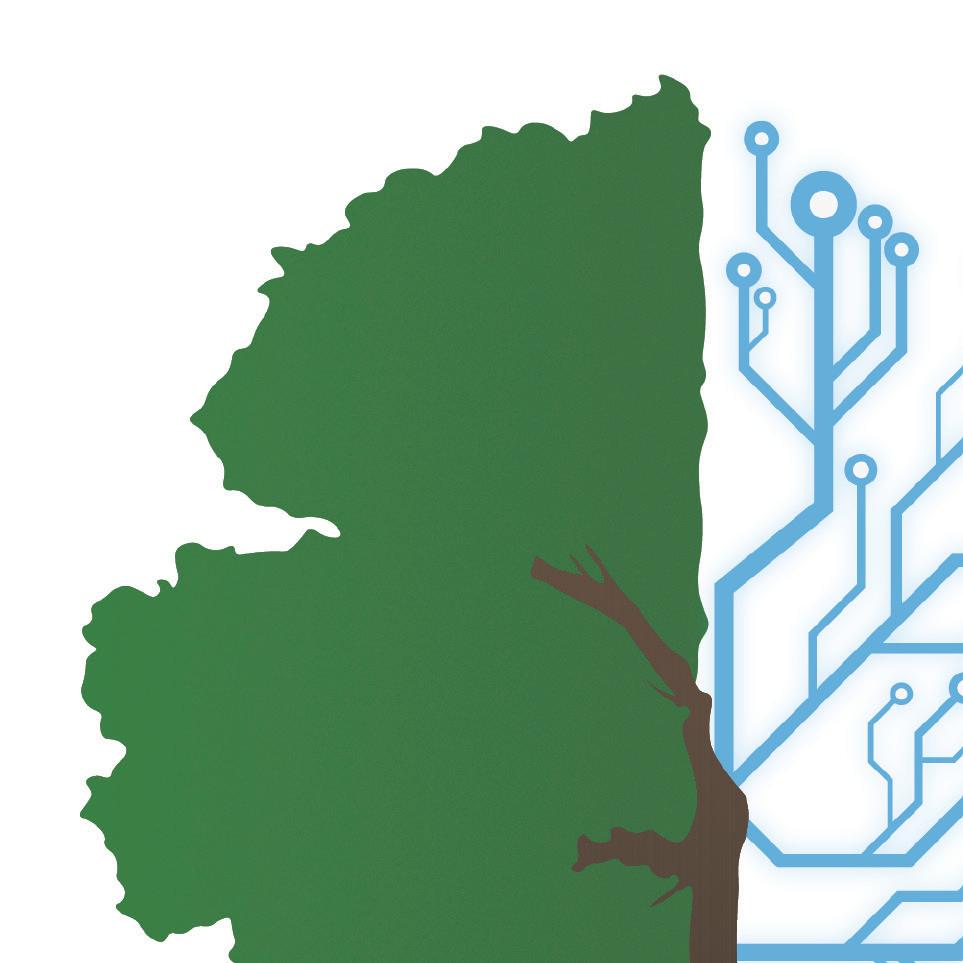

JULIAN BONNER, DN ILLUSTRATION
Indiana utilities weren’t anticipating the impact that data centers for Artificial intelligence would have on the environment. 14

Ball State’s Communications Center released a Feb. 18 statement looking for volunteers to partake in a study of body mass index. “Your participation can help us better understand how body composition influences health markers,” according to the statement. Participants must be female and range between the ages of 18-50.
Second Harvest Food Bank of East Central Indiana announced in a Feb. 18 press release its tailgate food distributions event dates for spring of 2025. The food bank will be in Delaware County at the Muncie Mall Feb. 27 starting at 10 a.m. and while supplies last, according to the press release. No ID or proof of income is required.
Indiana House Representatives amended House Bill (HB) 1461 to increase vehicle registration fees by 10 percent over the next four years, according to Mirror Indy Feb. 17. Amendments to HB 1461 will create revenue for Indiana roads by increasing the wheel and vehicle excise tax maximum beginning July 1, according to Mirror Indy.
Indiana utilities weren’t anticipating the impact that data centers for Artificial intelligence would have on the environment.
Rebecca Thiele IPB News
The Ball State Daily News, Indiana Public Radio and Indiana Public Broadcast share a content agreement that allows for the publications to exchange and publish content. This story was written and edited by individuals at Indiana Public Broadcast. It was originally published by Indiana Public Broadcast Feb. 5., 2025.
Companies like Google, Meta, Microsoft and Amazon are building large data centers in Indiana for artificial intelligence. Each one requires power 24/7 — and a lot of it.
But Indiana utilities weren’t anticipating this when they made plans to get more power from sources like wind and solar. Data centers could delay utilities’ efforts to reduce greenhouse gas emissions.
Data centers present an economic opportunity for Indiana
If there’s one thing Indiana is known for besides corn, it’s business. Former Gov. Eric Holcomb has said these data centers will secure Indiana’s place in the economy of the future.
Fort Wayne Mayor Sharon Tucker hopes residents on the city’s southeast side can get a slice of that pie. She said the area hasn’t seen much investment since the early ’80s. Google’s proposed data center will likely employ no more than 200 people, but she said it will have ripple effects.
“It has already turned the heads of other
developers to go, ‘Well, if Google’s going there, perhaps we can go there as well, right?’” Tucker said.
Can utilities meet this high demand for energy with clean power?
But while data centers could present an opportunity for Indiana cities, they’re a huge challenge for the state’s utilities.
Ben Inskeep, with the consumer and environmental advocacy group Citizens Action Coalition, said we don’t know for sure how much energy these data centers will use, but documents from the utility Indiana Michigan Power show it’s a lot.
“These data centers, just in Indiana Michigan Power’s service territory in Indiana, could use more energy each year than all 6.8 million Hoosiers use in their homes each year. So we’re talking a scale that people probably can’t comprehend,” he said.
Inskeep said if utilities want to meet that large demand for power around the clock, it’s unlikely that cleaner sources like wind and solar can do that alone.
But to avoid the worst effects of climate change, scientists say we need to significantly reduce emissions by 2030.
“If any of that energy, a single megawatt hour comes from fossil fuels — that’s increasing our emissions,” Inskeep said.
So far, fossil fuels are exactly what Indiana utilities have in mind — whether that’s building new plants or keeping old ones around.
Duke Energy cited data centers as one reason
for keeping its Gibson coal plant open longer. NIPSCO plans to build at least one large natural gas plant, if tech companies sign contracts for their centers. Indiana Michigan Power is considering either purchasing or building new natural gas to meet their demand.
There’s not a lot of time for utilities to figure out how to power data centers before they come online and meet climate goals.
“The growth of data centers around the U.S. is one of the most challenging opportunities that’s come up for utilities in recent years,” said David Porter with the Electric Power Research Institute or EPRI.
Tech companies could work with utilities to create some wiggle room
EPRI is helping tech companies figure out how to manage energy use at data centers and solve some of these problems. He said there are ways to make data centers less of a strain on utilities and curb emissions.
“There’s three main things that take place inside a data center for AI. One is building the model. Two is training the model. And then the third is the actual execution of the model where users are querying it for information,” Porter said.
Porter said the first two can often be done at times when the demand for energy is lower, putting less pressure on the grid.
They also have backup generators — so they don’t always have to use power from the utility.
EPRI is researching ways to swap out the diesel fuel those generators use with climate-friendly
alternatives like vegetable oil or biodiesel. All of these things give utilities more choices in how they serve data centers — and, potentially, greener ones.
And that tight timeline data centers have? Porter said tech companies don’t actually need all that power all at once.
“Even when they finish getting all the steel and the concrete in the ground and say the buildings are finished. The computer load is not there yet,” he said.
Porter said it can take up to four years for a data center to get fully up and running.
Most of these big tech companies also have a vested interested in going green — Google, Meta, Amazon and Microsoft all aim to go net zero or have negative carbon emissions by 2040.
According to the Indiana Energy Association, which represents investor-owned utilities in Indiana, most of these tech companies are hoping to use some renewable energy to power their data centers.
Some are looking into small nuclear plants. But Porter said that technology is at least a decade from becoming commercially available. The first one hasn’t been built yet. The project seen as the most viable — backed by the U.S. Department of Energy — was canceled in 2023 after almost a decade and nearly $9 billion in costs.
In the meantime, Porter said natural gas will likely fill that gap.
550,000 18,000 Google’s hyperscale data centers averaged approximately Smaller data centers averaged approximately gallons (2.1 million liters) of water per day over the past year. gallons (68,100 million liters) of water per day over the past year.
Unbox 62 Sine qua non























ACCESS ALL OF BALL STATE’S STUDENT MEDIA IN ONE PLACE


